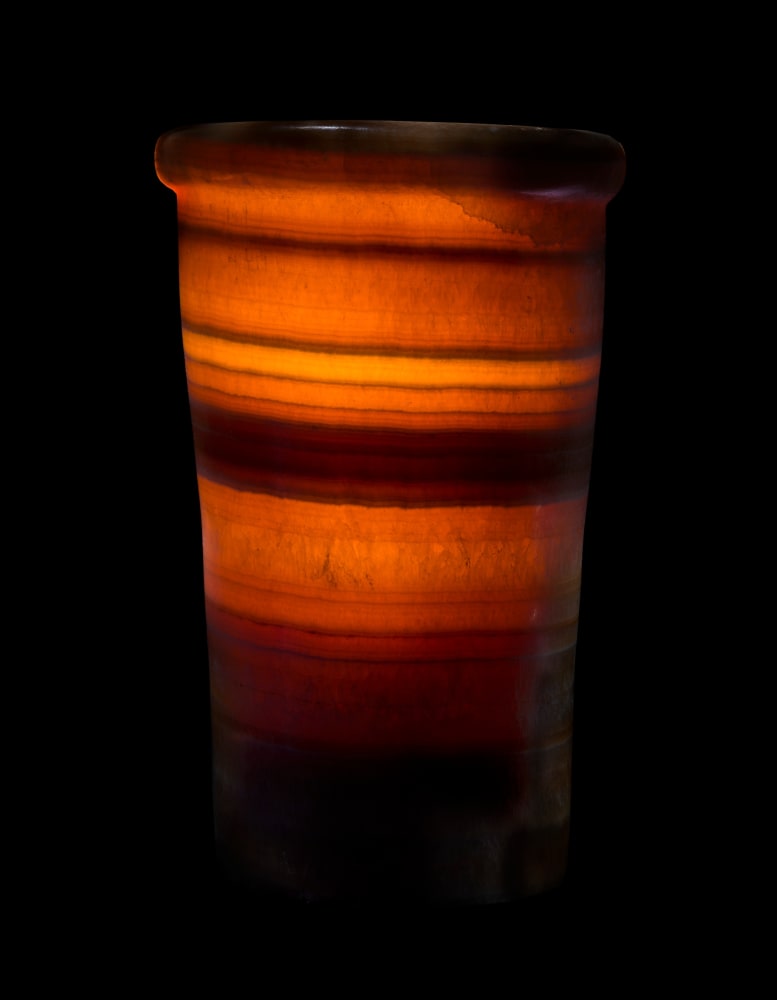The ancient Egyptians developed the art of creating beautiful vessels from a wide variety of beautiful stones long before they transferred those techniques to the sculpting of stone statues. This particular vase dates to the Third Dynasty, close to five thousand years ago. The dynasty was founded by Djoser, the king who is famous for erecting the Step Pyramid at Saqqara, the construction of which would lead to the standard pyramid tomb type of the later Old Kingdom. During the late Predynastic and Early Dynastic periods, stoneworkers developed new technologies to produce stone vessels; in addition to using abrasives, the artisans employed drills, saws, and lathes, with which they were able to create exquisite designs. The significance of stone vases to the Egyptian cultural record, and the beauty ascribed to them even in antiquity, is testified by the fact that the counterweight drill employed in their creation was represented in hieroglyphs, and was used in the writing of the noun for ‘art’.
This precious vase, of slightly flaring cylindrical shape, with a flat bottom and semi-round lip, is carved of Egyptian calcite alabaster, a stone prized for its translucency, exquisite banding, and softness, which made carving relatively easy (as compared to using hard stones, such as granite). Regarded as the most durable material in the Egyptian landscape, the choice of stone imbued these vases with characteristics of permanence. The creamy-white colouring of alabaster also connoted purity and cleanliness, so that the vessel, when used in a ritual context, remained uncontaminated and anything placed within it was thought to remain eternally unsullied. Here, the ancient craftsman has artfully exploited the inherent banding of the alabaster, ingeniously incorporating it into the design, so that the horizontal bands of
geological sedimentary layers wrap around the vase’s circumference, gently spiraling downwards in a series of alternating coloured bands. The resulting composition is remarkably contemporary in feeling. The surface is highly-polished, creating a smooth and incredibly tactile form, whilst, on the interior, the rough texture formed by the rotating lathe is visible.
Alabaster vessels in a variety of shapes are known in ancient Egypt throughout the over three millennia of its history. The smaller of these, such as the present, were luxury goods, intended to hold expensive unguents, ointments, and perfumes, both whilst the owner was alive and also in the tomb, so as to provide the individual with all the comforts and delights of life for eternity.
Further Literature
W.M. Flinders Petrie, Stone and Metal Vases, (Warminster, 1977), pl. X, 73.
Ali el-Khouli, Egyptian Stone Vessels—Predynastic Period to Dynasty III (Mainz am Rhein, 1978).


